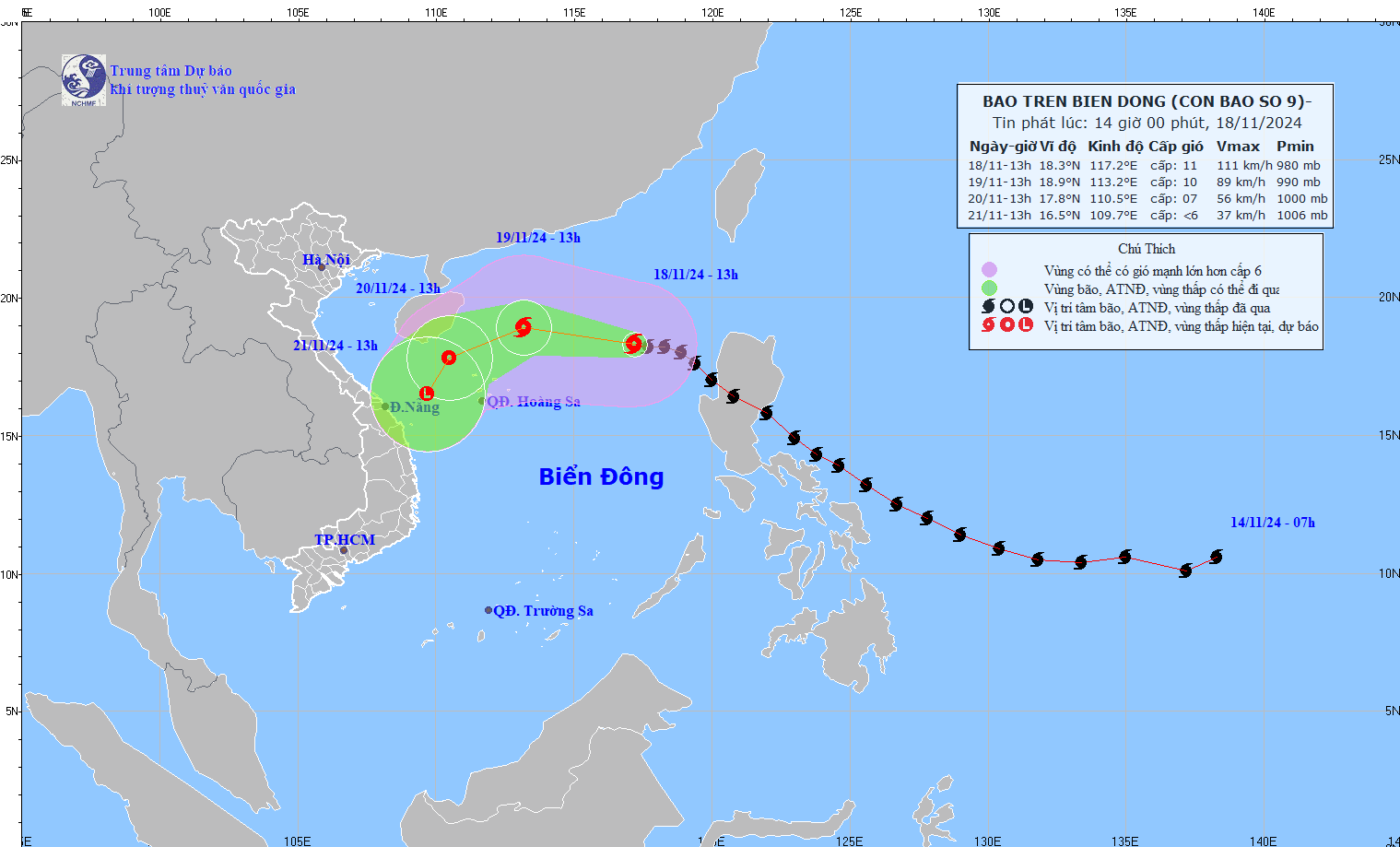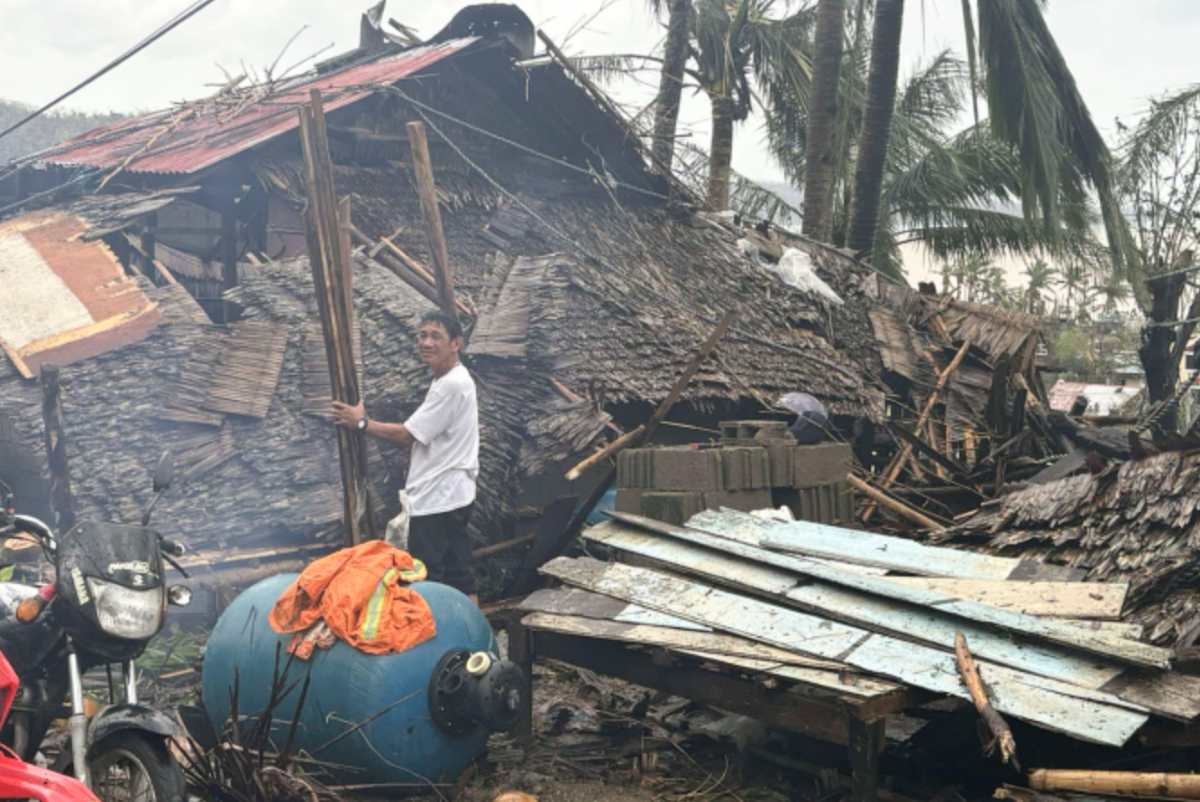The Philippine Atmospheric, Geophysical and Astronomical Services Administration (PAGASA) typhoon/low pressure forecast model on November 18 said that during the week from November 25 to December 1, 2024, a low pressure is forecast to form within the Philippine typhoon monitoring area (TCAD). This low pressure may enter the Philippine forecast area (PAR) but is unlikely to strengthen into a typhoon.
Meanwhile, at 1:00 p.m. on November 18, storm Man-yi (called Pepito by the Philippines) left PAR, with its center at about 18.3 degrees north latitude; 117.2 degrees east longitude, in the eastern sea of the northern East Sea, about 550 km east-northeast of Vietnam's Hoang Sa archipelago. The strongest wind near the storm's center was level 11 (103-117 km/h), gusting to level 14. The storm moved west-northwest at a speed of about 20 km/h.
It is forecasted that by 1:00 p.m. on November 19, storm No. 9 will continue to weaken, about 240 km north-northeast of Vietnam's Hoang Sa archipelago, with a level 9-10 intensity, gusting to level 12.
At 1:00 p.m. on November 20, storm No. 9 gradually weakened into a tropical depression, about 220 km west-northwest of Hoang Sa archipelago, level 7 intensity, gust level 9.
At 1 p.m. on November 21, the tropical depression gradually weakened into a low pressure area in the sea off the central central coast of Vietnam, with an intensity below level 6.

Typhoon Man-yi - the sixth major storm to hit the northern Philippines in less than a month - has added to the crisis caused by previous storms, leaving scores of villagers missing, homes destroyed and power outages widespread.
Man-yi made landfall in the Philippine island province of Catanduanes late on Friday with winds of up to 195 kilometers per hour. Disaster officials are still trying to confirm whether two deaths in Camarines Norte province were directly related to the storm. Authorities are also searching for a family of three missing in Nueva Ecija province after their house was washed away.
More than a million people were affected by Man-yi and the two previous typhoons. Nearly 700,000 sought shelter or stayed with relatives. The storm damaged or destroyed nearly 8,000 homes and caused power outages in more than 100 cities and towns due to downed power poles.

Camarines province, the hardest hit, is facing a dire situation with damaged homes, no electricity, while clean water and mobile phone services are disrupted.
"People have not yet recovered from the previous storms when super typhoon Man-yi made landfall. One disaster followed another," said Camille Gianan, the province's information officer.
This unprecedented series of storms over the past three weeks has killed more than 160 people, affected 9 million people and caused significant damage to communities, infrastructure and farmland. The Philippines may need to import rice due to severe crop damage.
International aid, including cargo planes and storm relief supplies, has been provided by the United States, Singapore, Malaysia, Indonesia and Brunei to support the Philippines' overwhelmed disaster response agencies.











